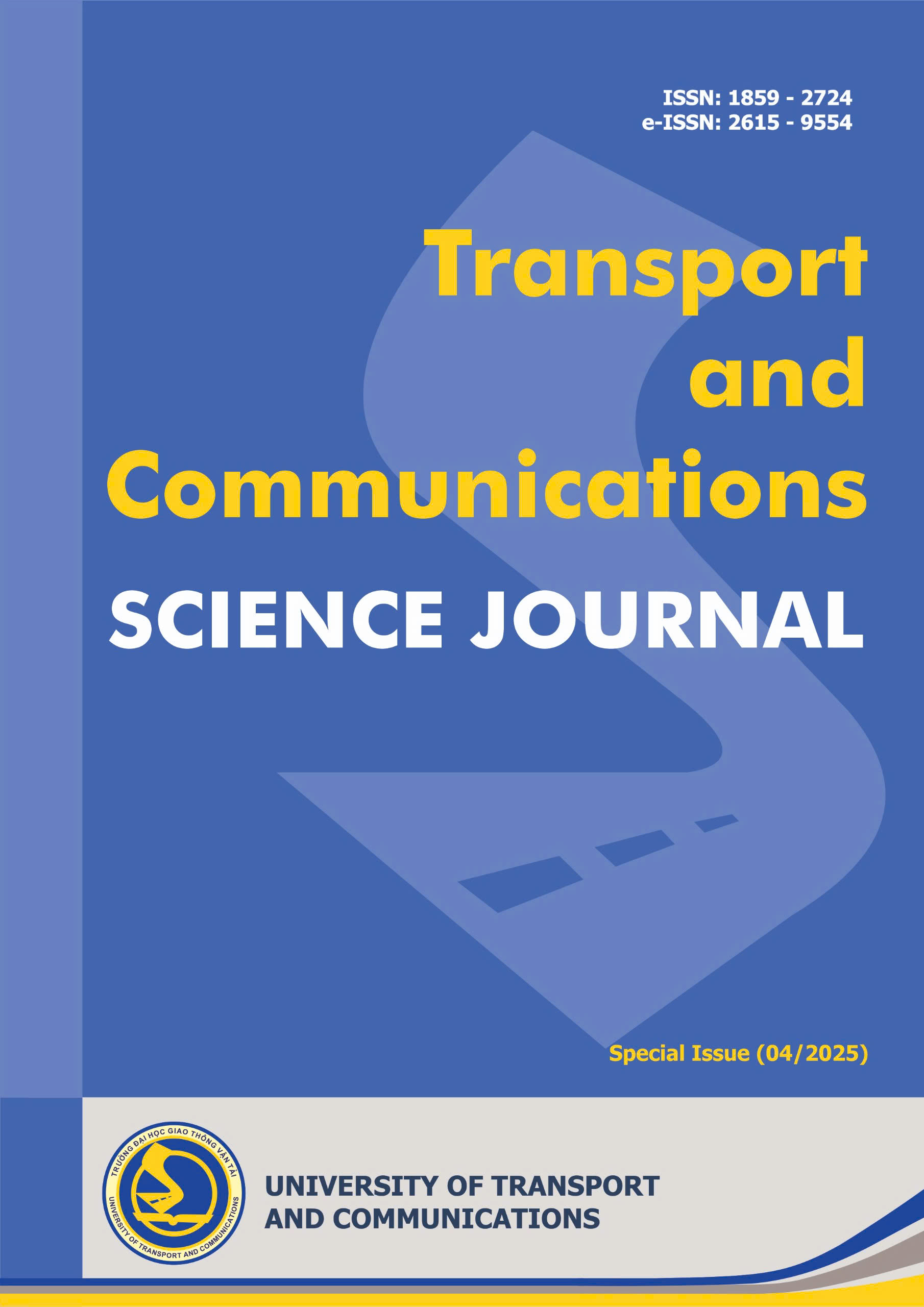Basis for selecting the configuration of high-speed distributed-power trains
Email:
ndtoan@utc.edu.vn
Từ khóa:
train configuration, distributed power, high-speed train, train resistance, motor car
Tóm tắt
In conventional railways, when utilizing concentrated power, the train configuration is determined based on the locomotive's power and the types of cars used in the train. The total train mass must first be defined for a given limiting gradient. Based on the total train mass and the load and tare weight of the cars, the specific train composition (the number of cars) is determined. For urban rail and high-speed trains, which primarily serve passenger transportation, a different approach is required, particularly for distributed-power trains. In such cases, basic resistance is not calculated separately for each car but for the entire train. The number of cars is typically structured into fixed modules, requiring an assessment of how many motor cars should be included within a given train configuration. To address this issue, the article presents the basis for selecting the configuration of high-speed trains with distributed traction. Based on this, configurations for several different options were selected, and the feasibility of utilizing kinetic energy to overcome limiting gradients along the line was also verifiedTài liệu tham khảo
[1]. N. V. Chuyen, Train traction, University of Transport and Communications, Hanoi, 2001.
[2]. D. D. Tuan, V. D. Loc, D. V. Dung, Rolling stock operations, Transport Publishing House, Hanoi, 2013.
[3]. Ministry of Transport, Procedures for calculating train traction on railways, Hanoi, 1985.
[4]. А. М. Babichkov, B. А. Gursky, А. P. Novikov, Train traction and traction calculations, “Transport”, Moscow, 1971.
[5]. V. D. Kuzmich, V. S. Rudnev, S. Ya. Frenkel, Theory of locomotive traction, “Route”, Moscow, 2005.
[6]. J.L. Meriam, L.G. Kraige, Engineering mechanics: Dynamics, John Wiley & Sons, Inc., 2016.
[7]. R. B. Bird, W. E. Stewart, E. N. Lightfoot, Transport phenomena, John Wiley & Sons, Inc., 2007.
[8]. J. Y. Wong, The dynamics of vehicles on roads and tracks, World Scientific Publishing Company, 2008.
[9]. S. Chandra, M.M. Agarwal, Railway engineering, Oxford University Press, 2017.
[10]. M. Guiggiani, Advanced vehicle dynamics, Springer, 2007.
[2]. D. D. Tuan, V. D. Loc, D. V. Dung, Rolling stock operations, Transport Publishing House, Hanoi, 2013.
[3]. Ministry of Transport, Procedures for calculating train traction on railways, Hanoi, 1985.
[4]. А. М. Babichkov, B. А. Gursky, А. P. Novikov, Train traction and traction calculations, “Transport”, Moscow, 1971.
[5]. V. D. Kuzmich, V. S. Rudnev, S. Ya. Frenkel, Theory of locomotive traction, “Route”, Moscow, 2005.
[6]. J.L. Meriam, L.G. Kraige, Engineering mechanics: Dynamics, John Wiley & Sons, Inc., 2016.
[7]. R. B. Bird, W. E. Stewart, E. N. Lightfoot, Transport phenomena, John Wiley & Sons, Inc., 2007.
[8]. J. Y. Wong, The dynamics of vehicles on roads and tracks, World Scientific Publishing Company, 2008.
[9]. S. Chandra, M.M. Agarwal, Railway engineering, Oxford University Press, 2017.
[10]. M. Guiggiani, Advanced vehicle dynamics, Springer, 2007.
Tải xuống
Chưa có dữ liệu thống kê

Nhận bài
20/02/2025
Nhận bài sửa
28/04/2025
Chấp nhận đăng
28/04/2025
Xuất bản
30/04/2025
Chuyên mục
Công trình khoa học
Kiểu trích dẫn
Do Duc, T., & Nguyen Duc, T. (1745946000). Basis for selecting the configuration of high-speed distributed-power trains . Tạp Chí Khoa Học Giao Thông Vận Tải, 76(2025), 373-383. https://doi.org/10.47869/tcsj.76.2025.1
Số lần xem tóm tắt
77
Số lần xem bài báo
49









